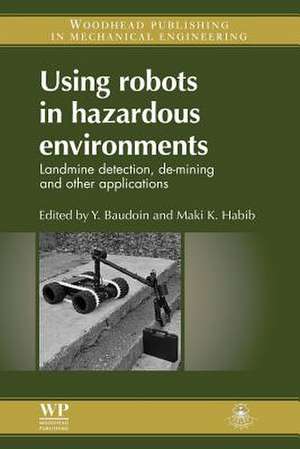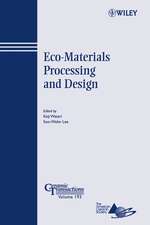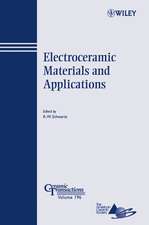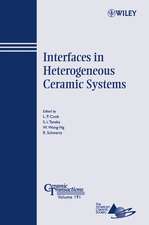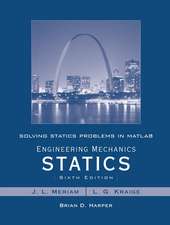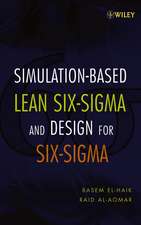Using Robots in Hazardous Environments: Landmine Detection, De-Mining and Other Applications
Editat de Y Baudoin, M K Habiben Limba Engleză Paperback – 18 aug 2016
Part one provides an overview of the use of robots for humanitarian de-mining work. Part two discusses the development of sensors for mine detection whilst Part thee reviews developments in both teleoperated and autonomous robots. Building on the latter, Part four concentrates on robot autonomous navigation. The final part of the book reviews research on multi-agent-systems (MAS) and the multi-robotics-systems (MRS), promising tools that take into account modular design of mobile robots and the use of several robots in multi-task missions.
With its distinguished editors and international team of contributors, Using robots in hazardous environments: landmine detection, de-mining and other applications is a standard reference for all those researching the use of robots in hazardous environments as well as government and other agencies wishing to use robots for dangerous tasks such as landmine detection and disposal.
- Reviews the development of robotic systems for de-mining and other risky activities
- Discusses the development and applications of sensors for mine detection using different robotic systems
- Examines research on multi-agent-systems and multi-robotics systems
Preț: 1222.06 lei
Preț vechi: 1342.93 lei
-9% Nou
Puncte Express: 1833
Preț estimativ în valută:
233.85€ • 250.06$ • 194.97£
233.85€ • 250.06$ • 194.97£
Carte tipărită la comandă
Livrare economică 11-25 aprilie
Preluare comenzi: 021 569.72.76
Specificații
ISBN-13: 9780081015032
ISBN-10: 0081015038
Pagini: 692
Dimensiuni: 156 x 234 x 36 mm
Greutate: 0.96 kg
Editura: ELSEVIER SCIENCE
ISBN-10: 0081015038
Pagini: 692
Dimensiuni: 156 x 234 x 36 mm
Greutate: 0.96 kg
Editura: ELSEVIER SCIENCE
Cuprins
Part 1 Humanitarian demining: The evolution of robots and the challenges: Introduction: Mobile robotics systems for humanitarian de-mining and risky interventions; Robot for non-conventional demining process: From remote control to autonomy; Locomotion and localisation of humanitarian demining robots; Sustainable and appropriate technologies for humanitarian demining; Some problems of robotic humanitarian demining evolution. Part 2 Sensors for mine detection and robotics: Sensing capabilities for mobile robotics; Sensor fusion for automated landmine detection on a mobile robot; Relating soil properties to performance of metal detectors and ground penetrating radars; Contribution of geophysics for landmines and UXO detection: Case study in the Egyptian environment; Detecting landmine fields from low-resolution aerial infrared images; GPS data correction using encoders and INS sensors. Part 3 Autonomous and teleoperated robots for humanitarian demining: Environment-adaptive antipersonnel mine detection system: Advanced mine sweeper; Mechanical mine clearance: Development, applicability and difficulties; Robotic tools for demining and risky operations; RAVON — The robust autonomous vehicle for off-road navigation; Computer training in handling with ground teleoperated robots for demining. Part 4 Robot autonomous navigation and sensors: A fuzzy-genetic algorithm and obstacle path generation for walking robot with manipulator; Synthesis of a sagittal gate for a biped robot during single support phase; Fuzzy logic control in support of autonomous navigation of humanitarian demining robots; Human victim detection and stereo-based terrain traversability analysis for behavior-based robot navigation; Simulation of a mobile multilink robot with vision virtual reality system; Estimation of the distance by using the signal strength for localization of networked mobile sensors and actuators. Part 5 Multi robotics systems: Navigation and cooperation; Experimental study on the effects of communication on cooperative search in complex environments; Mobile ad-hoc networking supporting multi-hop connections in multi-robot scenarios; A decentralized planification architecture for a swarm of mobile robots; Using the NVIDIA CUDA application in the cognitive supervision and control of the multi robot system methodology for the supervision and control of the multi robotic system with CUDA application; Laser based cooperative multi-robot map building for indoor environments; Heterogeneous multi-agent system behaviour patterns for robotics applications; A light-weight communication protocol for tele-operated Robots in risky emergency operations.
